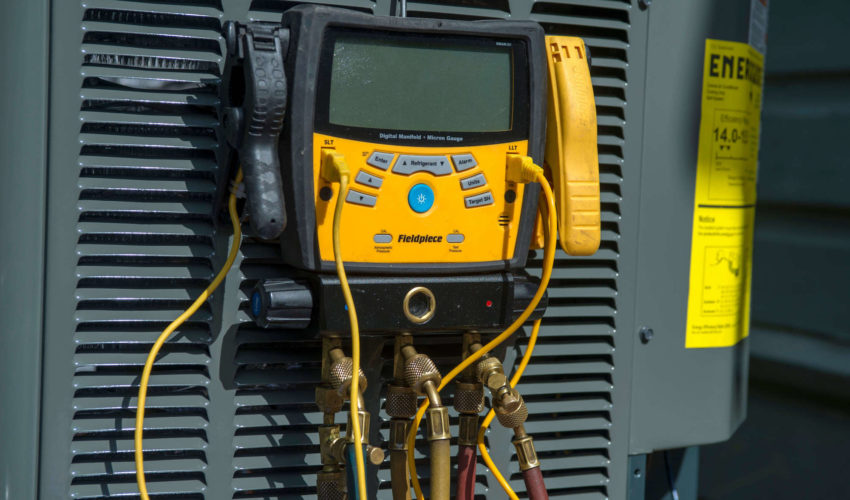It’s that time of year. The temperature is rising, and your air conditioning system is working in overdrive to keep your home cool. But how much “running” is normal, and when is it a sign that you may need more refrigerant?
One of the most common calls we receive from customers during the summer months is that their air conditioning system is low on refrigerant. Refrigeration systems are closed circuits: refrigerant isn’t actually consumed by the air conditioning unit. Systems only need more refrigerant when they leak.
If you have to add refrigerant to your air conditioning system frequently, it’s probably causing other problems to your system, such as extra stress on the compressor or excessive condensation on the indoor coil. Left unaddressed, these problems can lead to early system replacement and water damage to your home, which is why it’s better to correct a leaking system early on rather than continuously adding refrigerant to the system.
There are usually three signs of refrigerant leaks:
1. Your A/C constantly runs.
You begin to notice your air conditioning system running a lot more than normal. For some systems, long run times are normal as these high efficiency systems were designed to cycle on and off less frequently to remove more humidity. But if you notice that your system begins to run all the time when it hasn’t before, this could be the first sign that you have a leak.
2. Ice begins to form.
Air conditioners need the proper amount of airflow and refrigerant to keep the cold coil from freezing over. While this sounds counterintuitive, running low on refrigerant can cause the indoor coil to produce ice because the system does not have enough pressure to keep the temperature of the coil above freezing. This causes the system to freeze up.
Most people don’t know their A/C has frozen until they see ice forming on the outdoor unit or they don’t feel any air coming out of the registers. The ice production begins long before that, developing first on the inside of the A/C unit. Once the indoor evaporator coil begins to freeze,it is blocked from receiving sufficient air flow. The result is more ice, eventually turning the evaporator coil into a solid block of ice and choking off airflow entirely. The ice inside then travels along the system’s refrigerant lines, making its way to the outdoor unit, causing ice to form outside.
When you see ice forming on your lines or your outdoor unit, check your air filter right away. If you’re lucky, the freezing could just be a result of a dirty filter. Dirty air filters restrict air flow to the coil, which could lead to your unit freezing. To determine if your filter is causing the problem, shut down your A/C to thaw it out naturally. Then change your filter. If your A/C unit freezes again after your filter change, it could be a sign that your refrigerant is leaking out.
3. Your A/C is blowing warm air.
Your A/C unit can blow warm air if it is almost out of refrigerant. If the refrigerant leak is significant enough and you aren’t home during the hottest part of the day to see it freezing over, then you might not notice the leak until refrigerant levels have dropped so low that they system can’t produce any cold air at all.
A telltale sign of extremely low refrigerant is to determine how your outdoor unit is performing. If your outdoor unit is running normally but your indoor is blowing warm air, that’s a sign that your refrigerant level has dropped so low that it can’t produce any cold air. If you think this is the case, you will need to call an A/C contractor to find and fix the leak before adding more refrigerant.
Think you might have a refrigerant leak? North East Air Conditioning, Heating & Plumbing can find and repair the leak and get your A/C working back in no time. Make an appointment today!


